Dibbinsdale, near Bromborough on the Wirral, is the steep valley of the River Dibbin, nowadays called the Dibbinsdale Brook. It is mostly undisturbed woods, containing many distinctive “ancient woodland” plants below the trees, including native Bluebells. There are also wetland areas, wild meadows, good paths and an information centre. It is designated a Site of Special Scientific Interest.
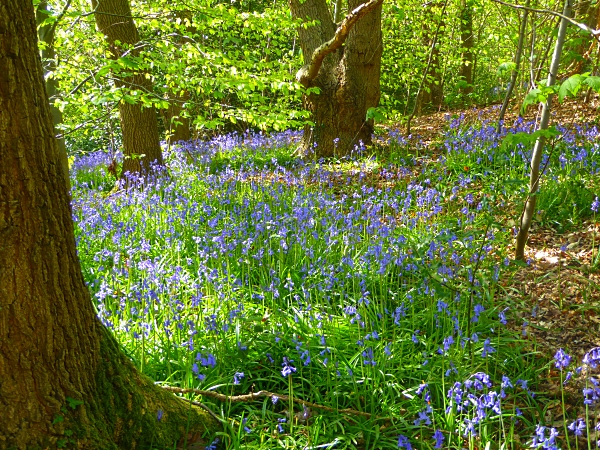
It was another scorcher today, possibly another record-breaker for April. Luckily we were in cool dappled shade for most of the day. The trees are mostly Beech and Hornbeam, with some Wych Elm. There are lots of Willows and Alders in the marshy bottoms, including this shattered old Crack Willow.
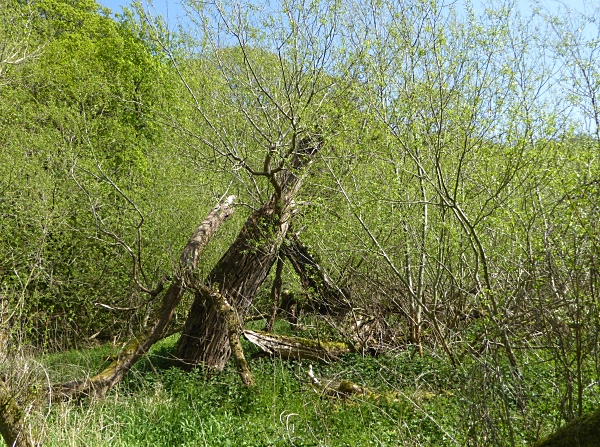
Most of the Bluebells are the rarer native types (not the imported Spanish ones you see in most gardens) with nodding stalk, flowers all on one side, curled up petals and white anthers.
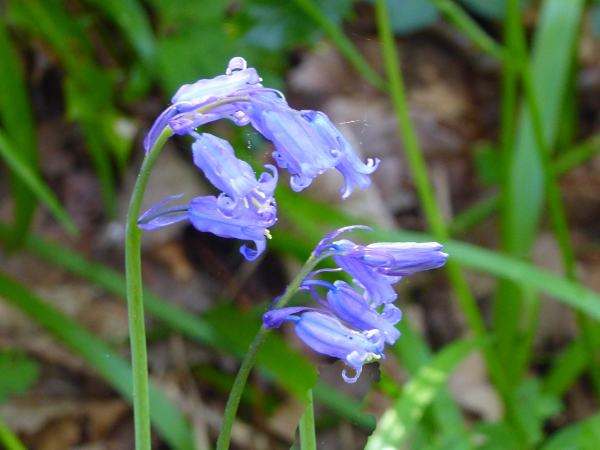
Other ancient woodland indicator species carpeting the ground were the last few Wood Anemones, some patches of Dog’s Mercury and the bright yellow flowers and glossy green leaves of Lesser Celandine.
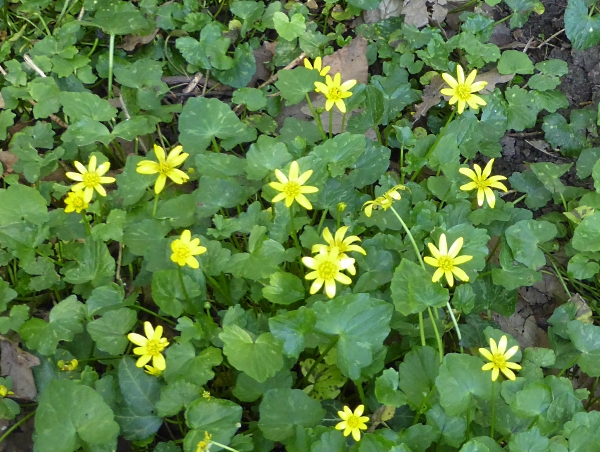
We also noted the dainty white flowers of Greater Stitchwort, and near the marshy areas were clumps of rich gold Marsh Marigolds. There were a few plants of Lady’s Smock, which is usually white, but there are pink ones here. It and Garlic Mustard (which we also saw) are the food plants for the Orange Tip butterfly. We saw many of them through the day, all busily in flight, and sadly none sat still to be photographed. We also saw one each of Peacock, Comma, Speckled Wood and this Holly Blue, perched on a leaf over a stream, and occasionally shivering intensely, as if it was warming up.
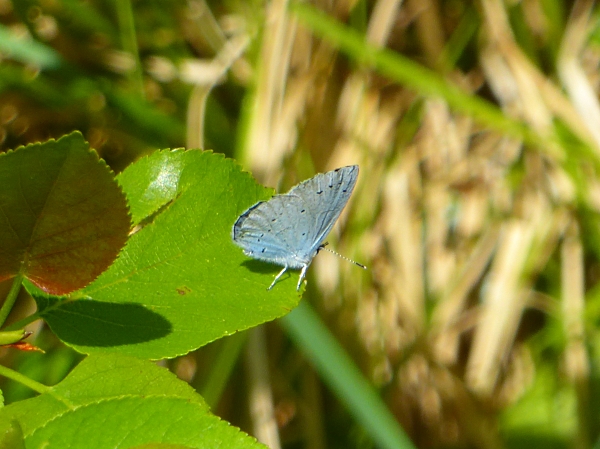
Birds were a bit hard to find, and the only ones we saw were flashing about busily. They were mostly the usual woodland species like Blue Tit, Great Tit, Chaffinch, Robin and Wren. Mallards and Moorhen were skulking in secluded pools, a Heron took flight over the reeds and we heard our first Chiffchaff.
Around the meadow the Apple blossom is out, with its large white flowers and round pink buds. We also spotted more Alder Beetles, and checked the undersides of the leaves for caterpillars around the holes, but couldn’t see any. Is it the awakening adults which chew and damage the soft new leaves? We also spotted what we think was a developing Oak Apple on a Pedunculate Oak. It was over an inch wide, say 3cm, and it was developing on its own, not in a cluster like Marble Galls.

If anyone is interested, the rare Foxglove Tree Paulownia tomentosa in a private garden in Crosby is blooming again. This picture is looking north up Eshe Road. See the post of April 26th 2017 for details of its location. No frost this year, so it’s a cracker!
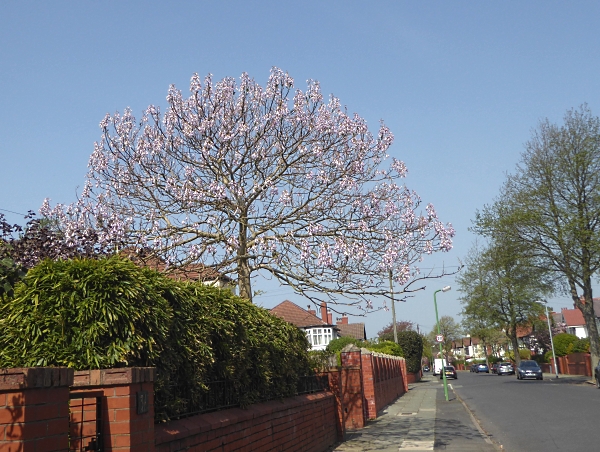
Public transport details: Train from Central Station at 10.15 towards Chester, arriving Bromborough Rake at 10.35. Returned on the number 1 bus at 2.50 from Croft Avenue East / New Chester Road, arriving Liverpool 3.15.
